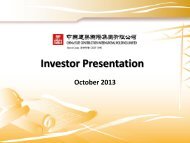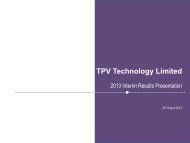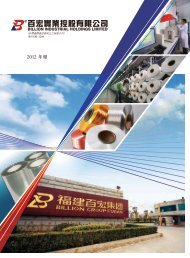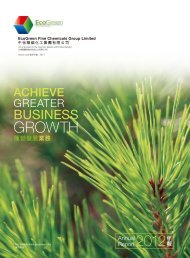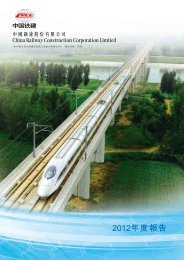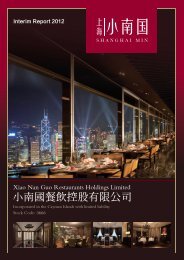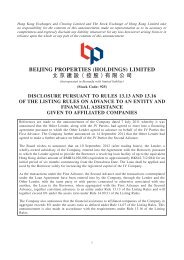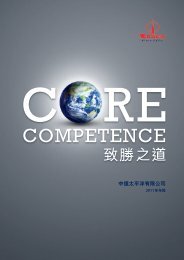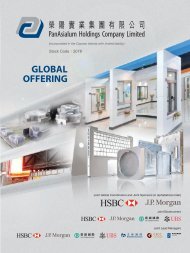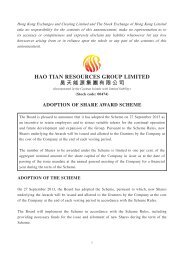Annual Report - QuamIR
Annual Report - QuamIR
Annual Report - QuamIR
You also want an ePaper? Increase the reach of your titles
YUMPU automatically turns print PDFs into web optimized ePapers that Google loves.
Notes to the Consolidated Financial Statements (Continued)<br />
<br />
2 Summary of significant accounting policies (Continued)<br />
2.27 Provisions (Continued)<br />
Where there are a number of similar obligations, the likelihood<br />
that an outflow will be required in settlement is determined by<br />
considering the class of obligations as a whole. A provision is<br />
recognised even if the likelihood of an outflow with respect to any<br />
one item included in the same class of obligations may be small.<br />
2 <br />
2.27 <br />
<br />
<br />
<br />
<br />
Provisions are measured at the present value of the expenditures<br />
expected to be required to settle the obligation using a pre-tax<br />
that reflects current market assessments of the time value of<br />
money and the risks specific to the obligation. The increase in<br />
the provision due to passage of time is recognised as interest<br />
expense.<br />
2.28 Revenue recognition<br />
Revenue comprises the fair value of the consideration received<br />
or receivable for the sale of goods, properties and services in the<br />
ordinary course of the Group’s activities. Revenue is shown net<br />
of business tax and after eliminating sales within the Group.<br />
<br />
<br />
<br />
<br />
<br />
2.28 <br />
<br />
<br />
<br />
<br />
The Group recognises revenue when the amount of revenue can<br />
be reliably measured, it is probable that future economic benefits<br />
will flow to the entity and specific criteria have been met for<br />
each of the Group’s activities as described below. The amount<br />
of revenue is not considered to be reliably measurable until all<br />
contingencies relating to the sale have been resolved. The Group<br />
bases its estimates on historical results, taking into consideration<br />
the type of customer, the type of transaction and the specifics of<br />
each arrangement.<br />
<br />
<br />
<br />
<br />
<br />
<br />
<br />
<br />
<br />
(i)<br />
Revenues from infrastructure and alternative energy are<br />
generated from water supply, electricity supply and the toll<br />
road. They are recognised based on the following:<br />
(i)<br />
<br />
<br />
<br />
(a)<br />
Revenue arising from water supply is recognised<br />
based on water supplied as recorded by meters<br />
read during the year.<br />
(a)<br />
<br />
<br />
<br />
(b)<br />
Revenue arising from electricity supply is recognised<br />
when electricity is supplied to the provincial grid<br />
(b)<br />
<br />
<br />
companies.<br />
(c)<br />
Revenue arising from toll road is recognised when<br />
services are rendered.<br />
(c)<br />
<br />
<br />
106 HKC (Holdings) Limited • <strong>Annual</strong> <strong>Report</strong> 2011



